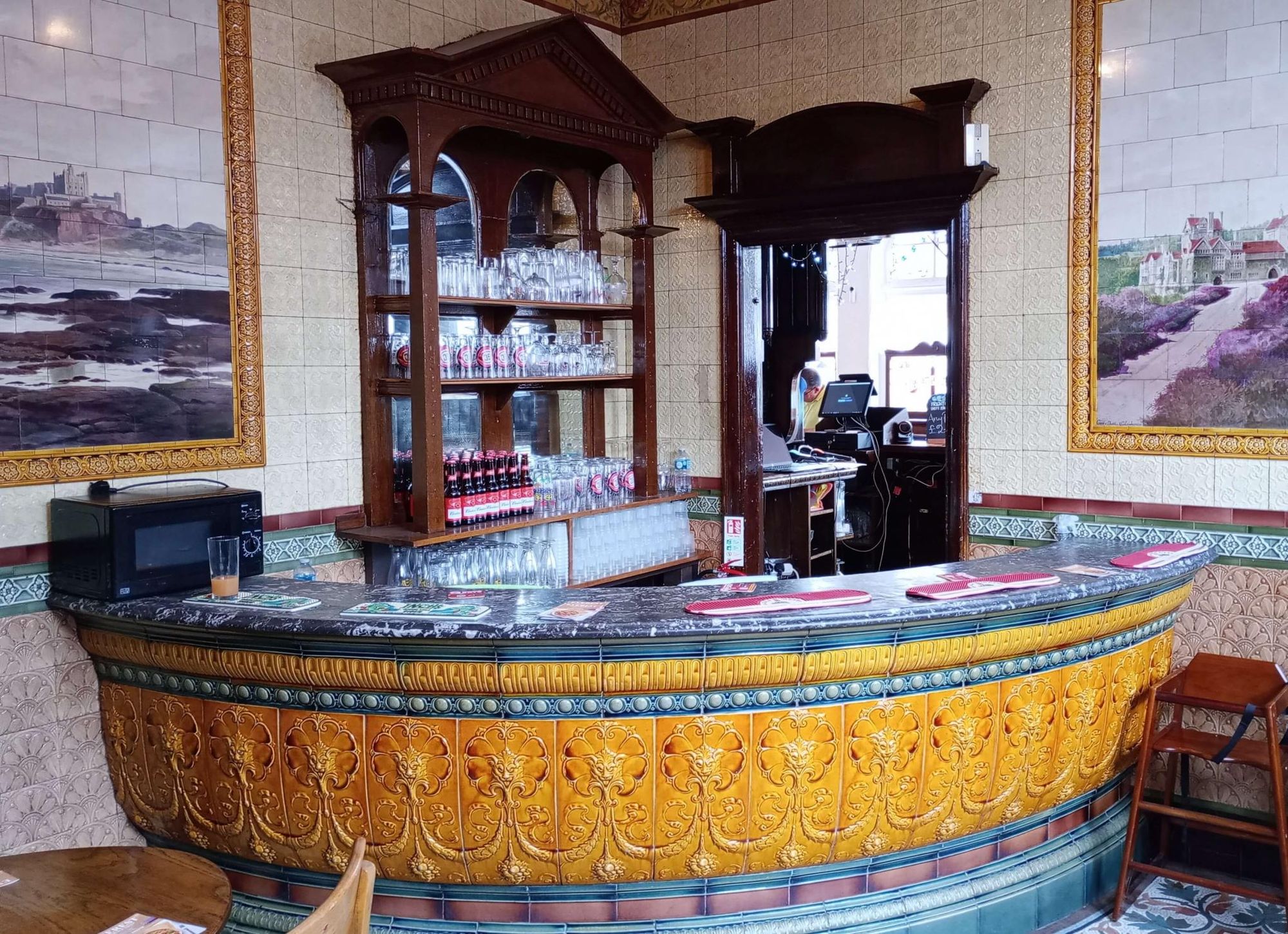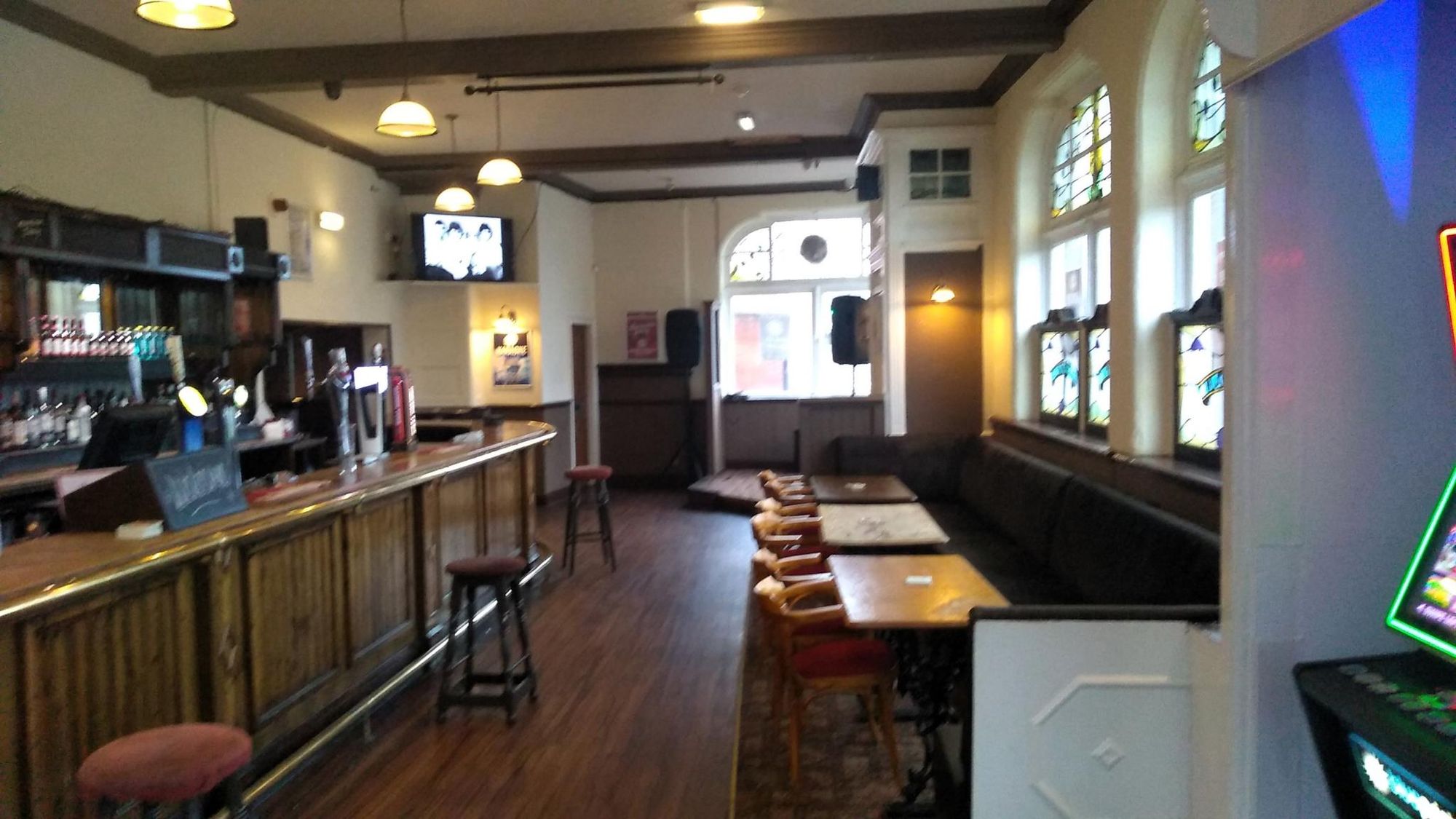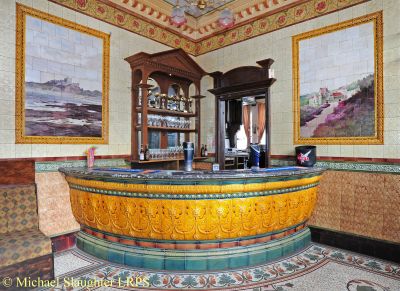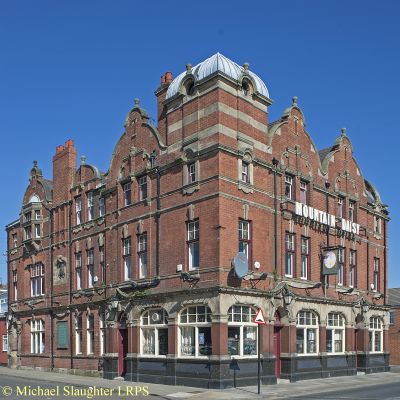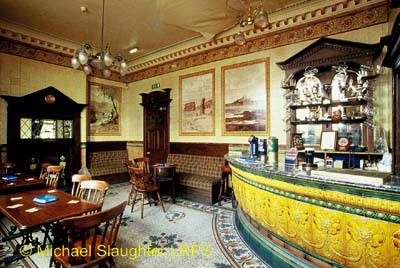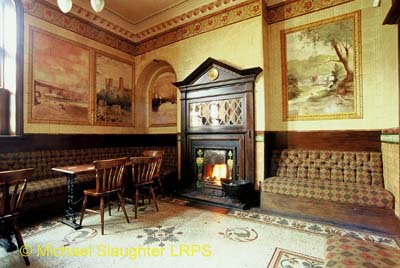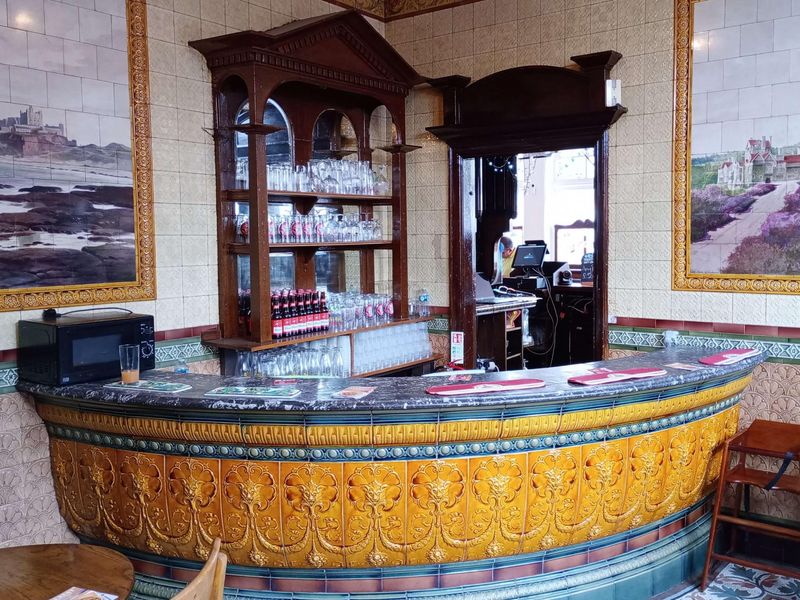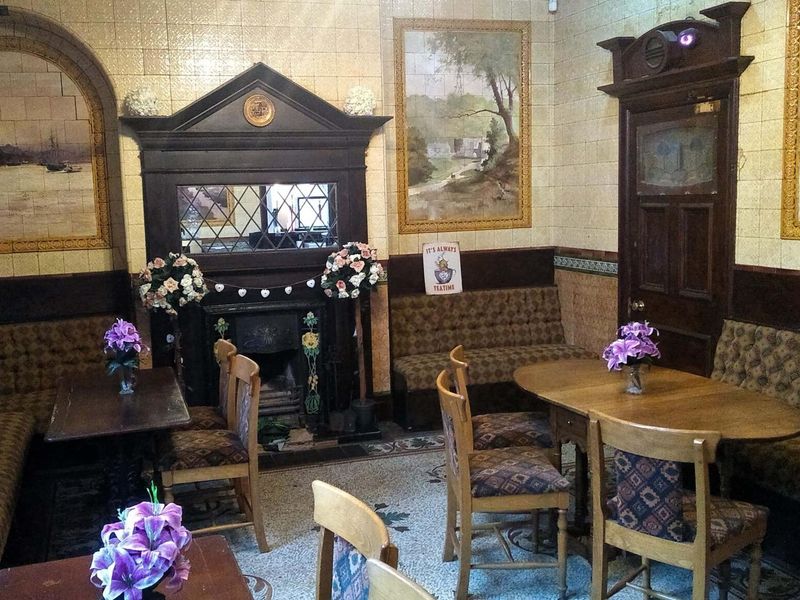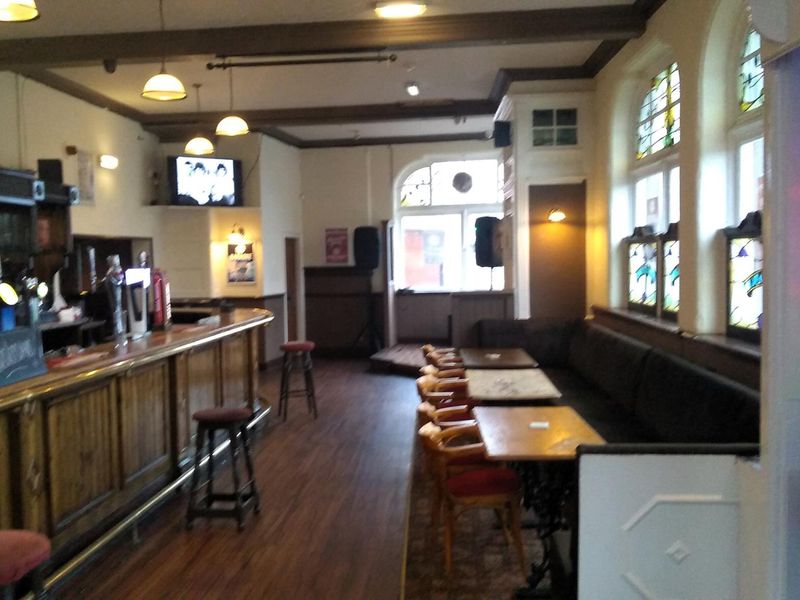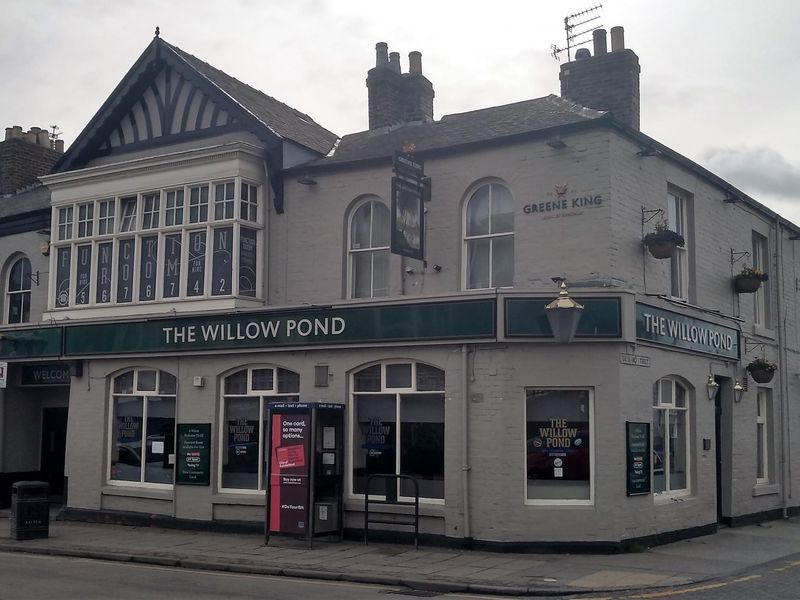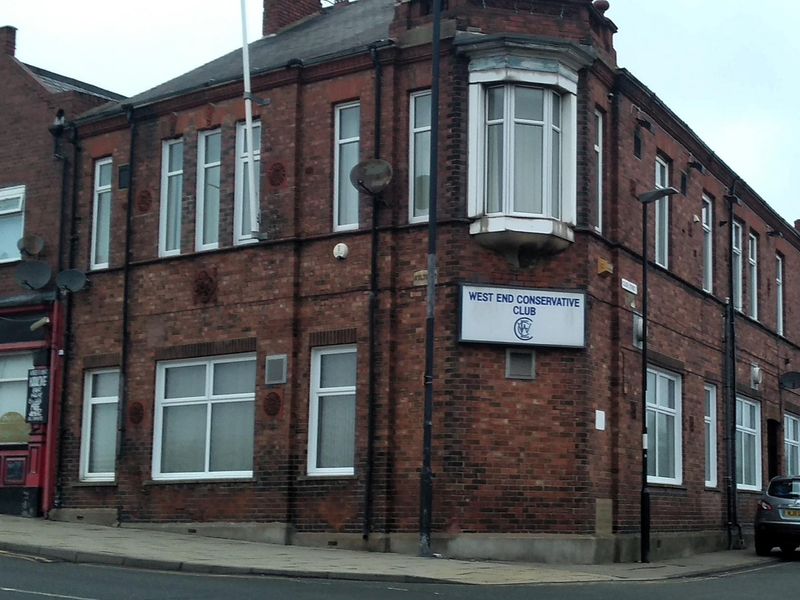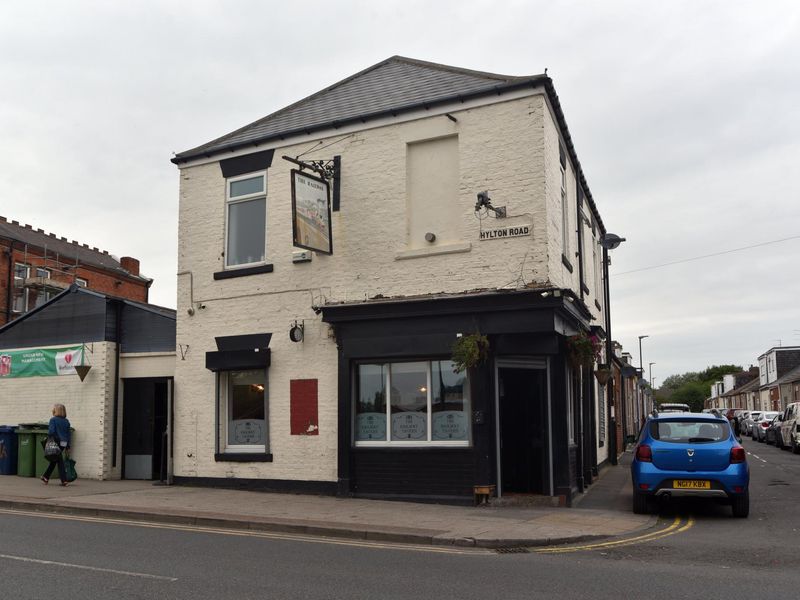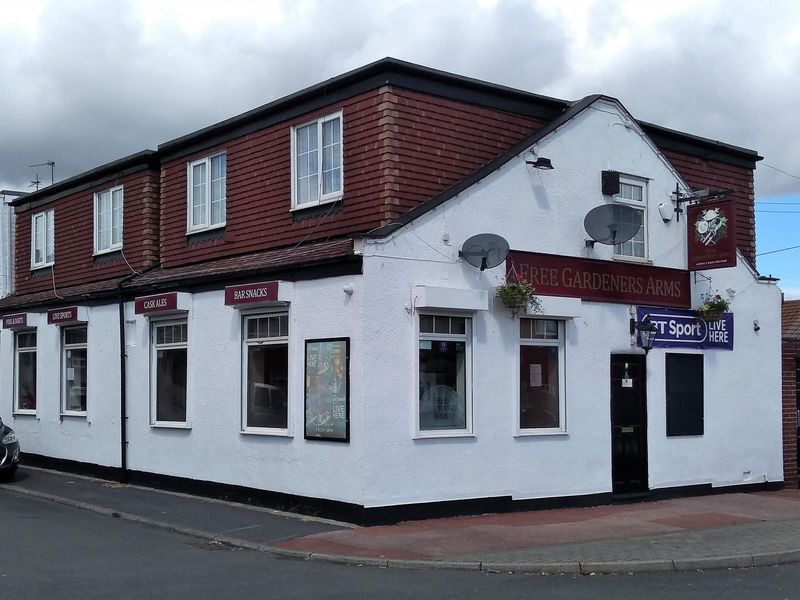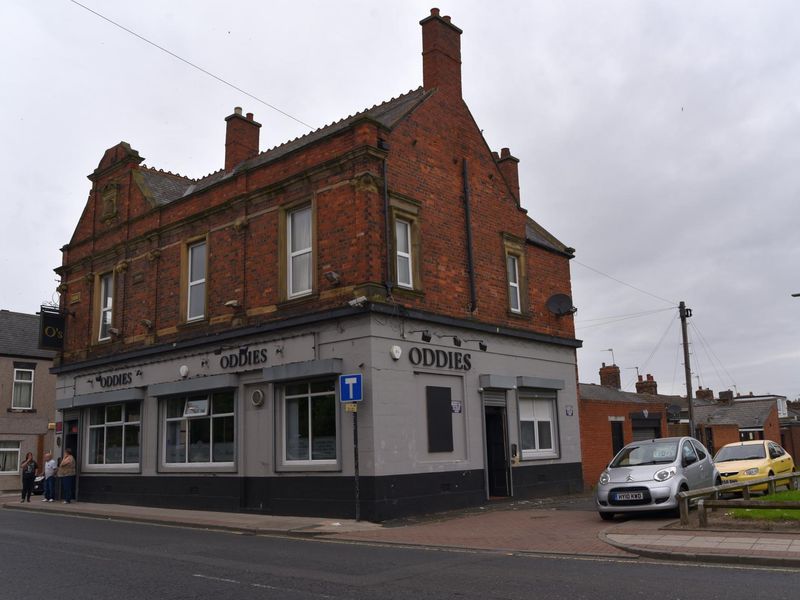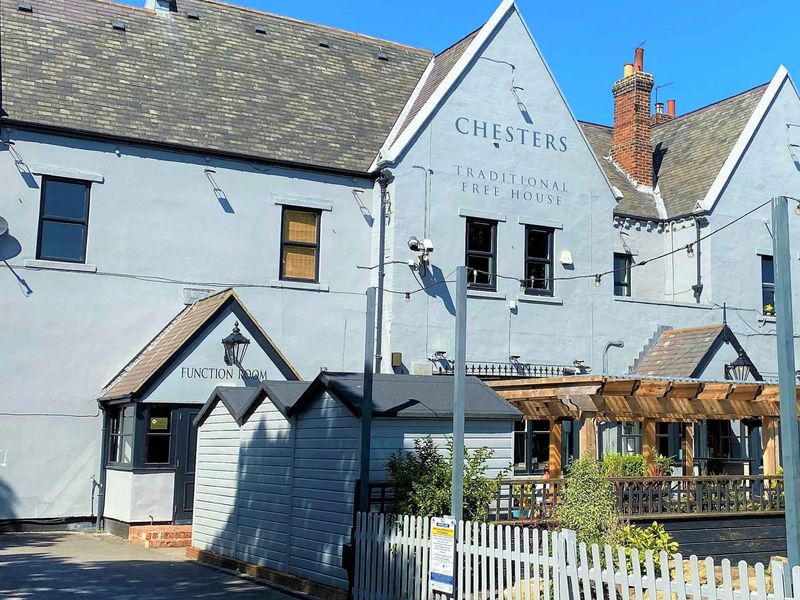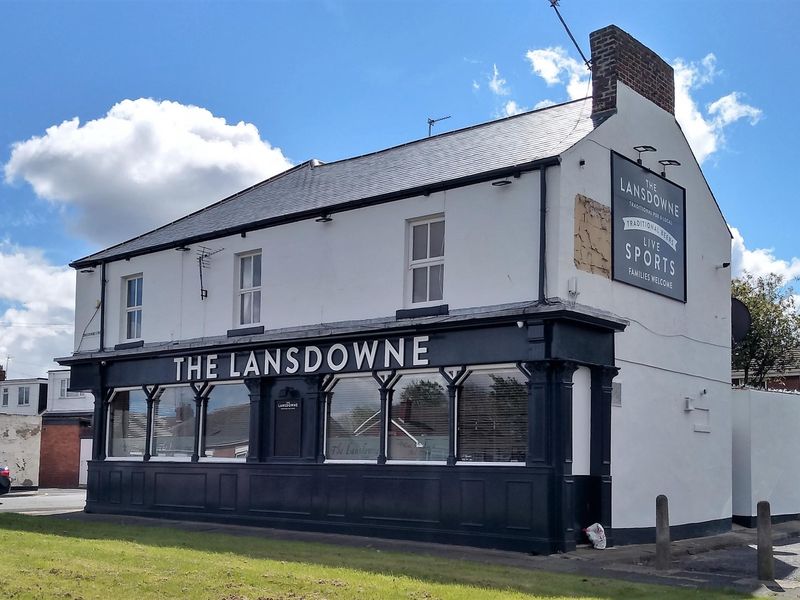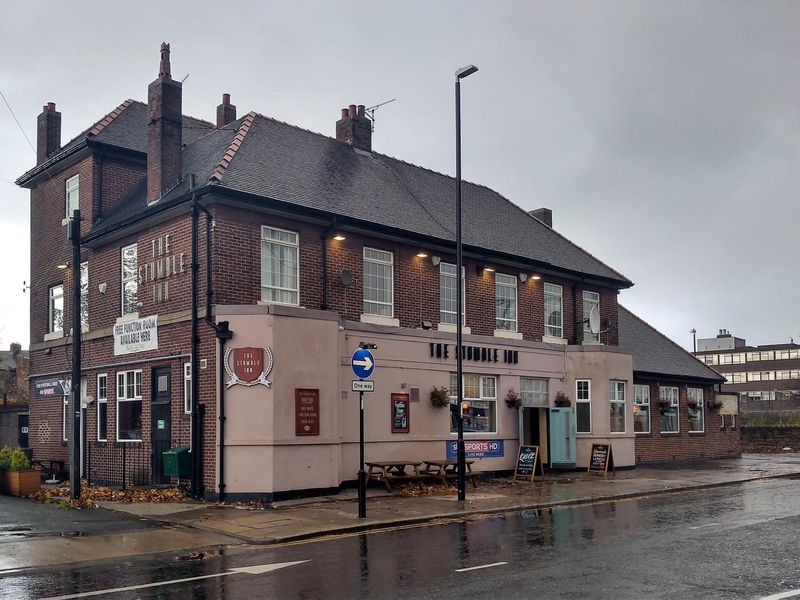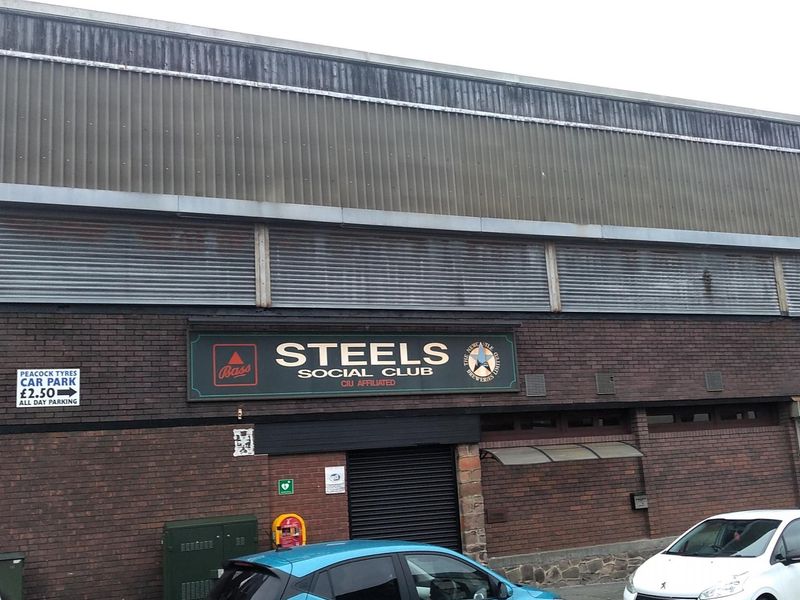A large, imposing pub rebuilt in 1900-2 as a hotel by the local architects, William & T.R. Milburn for W B Reid & Co Limited, brewers and wine & spirit merchants of Newcastle upon Tyne. It is a three-storey red brick building with stone dressings and a black marble facing on the ground floor. It has a square corner tower, a series of giant shaped gables, an oriel window and tall chimney-stacks. It has a slightly Queen Anne revival style emphasised by a metal plaque on the west facade with an impression of a mountain daisy; also '1901' in stone. When built it had a long front bar divided into three separate sections, two rear sitting rooms, a news room (now the kitchen) and two family departments.
One of a number of impressive Edwardian pubs built in Sunderland (another is the Heritage pub the Dun Cow in the town centre), it retains some original windows but has been substantially altered inside. However, the Sitting Room on the rear left, which was converted into a Buffet Bar, remains intact and is one of the most spectacular pub rooms anywhere in the country. It is visual feast of ceramic work made by Craven Dunnill & Co. of Jackfield, Shropshire, one of the leading manufacturers of the day. The walls are tiled from floor to ceiling with a dado of floral tiles with bands of green tiling and one of brown, then yellow tiles in relief up to a frieze of large floral tiles in pink, cream and green with a deep cornice with brackets picked out in a pale brown colour. It has wonderful display of mosaic covering the floor.
There is a stunning quarter circle ceramic bar counter faced with green and yellow faience in an animal head pattern with a marble top and is one of only fourteen remaining in the whole of the UK. Other Heritage Pubs with a ceramic bar counter are the Black Horse, Preston, Lancashire; Burlingtons Bar (at the Town House), St Annes on Sea, Lancashire; Red Lion, Erdington, Birmingham; Polar Bear, Hull, East Yorkshire; White Hart Hotel, Hull, East Yorkshire; Garden Gate, Hunslet, Leeds, West Yorkshire; Golden Cross, Cardiff, Glamorgan, Wales; Crown, Belfast, Northern Ireland
Other examples can be found at Horse & Jockey, Wednesbury, West Midlands where a small part on the left has been lost; Castle, Manchester City Centre; Hark to Towler, Tottington, Greater Manchester where the bar has been moved; Waterloo Hotel & Bistro, Newport, Gwent, Wales which has no public bar facility; and there is one in China Red which was the Coach & Horses, Dunswell, East Yorks and now operates as a Chinese Restaurant.
Craven Dunnill also specialised in tile pictures and here there are seven of them depicting north-eastern scenes - one of the most impressive displays of tiled paintings in any pub in the UK. They picture, from left to right, the Tyne and High Level Bridge, Newcastle; Durham Cathedral; Wearmouth Bridge, Sunderland; Finchale Abbey, near Durham; Marsden Rock with its grotto, Bamburgh Castle, Cragside House, Rothbury - the bridges being a celebration of the shipping that brought contemporary prosperity to the Tyne and Wear. The vessel in the Tyne painting is the HMS Victoria, seemingly being towed after initial fitting out at Elswick. She had been sunk off Lebanon in 1893. The wreck survives, stuck vertically in the seabed due to the weight of the single turret forward. It was the most serious Victorian naval disaster with the loss of 358 sailors, after being rammed by HMS Camperdown during naval formation manoeuvres, due to a miscalculation by Admiral Tryon. She was launched in 1887 and completed in 1889. Other magnificent displays of tiled paintings can be found at
Café Royal, Edinburgh, Scotland;
General Havelock, Hastings, East Sussex;
Central Bar, Leith, Edinburgh, Scotland;
Rose Villa Tavern, Hockley, Birmingham;
St James Tavern, Soho, London W1
Dolphin, Hackney, London E8;
and
Golden Cross, Cardiff, Glamorgan, Wales.
Other original fittings in the Buffet Bar include a floral tiled, cast iron and wood surround fireplace with a mirror in surround above, and three stained glass window screens showing scenes of eating and drinking, but any fixed seating was removed in late 1980s. If the snug is closed ask staff and they will open it up for you. The entrance on Cromwell Street leads into a fine vestibule with stained and leaded panels up to the ceiling. On the servery side of the screen is a blocked up hatch with a figure '1' above, which was the family department (off sales). There are broken pediments above most doorways.
The main bar was refitted in the 1970s but you can still see the remains of the two vestibule entrances on the Hylton Road side with stained and leaded panels - the left hand side one is blocked up with the right hand side one is in use; also good stained and leaded top lights above plain front windows. Some old dado panelling remains, now painted brown. The front bar is now L-shaped having absorbed the second sitting room and family department. All other fittings are modern.
At quiet times it may be possible to visit upstairs but best to ring ahead (0191 597 7261) to arrange. A staircase with good newel post leads to a first floor landing where there are two good exterior stained and leaded windows. Through a pair of screens with double doors and stained and leaded panels above you will find the former billiard room on the front of the building. Now a large function room, which is in use for Sunday lunches, it has a barrel vaulted ceiling, two skylights - one still with original etched panels - and pilasters, enhanced Corinthian in style, running all the way around the top part of the ceiling, 25 in all. There are also Corinthian pilasters from the two original tiled and wood surround fireplace mantelshelves up to cornice level at the base of the barrel section.
The two grand fireplaces have cast iron surrounds, decorative lintels and featuring a cartouche made of tin. This large room still retains its original bar fittings of a protruding panelled bar counter and fine three-bay bar back fitting with central pediment, bevelled mirror panels and pillars holding up the shelves. The letter box at the top is an S&N addition to show the till amount. There is also a dining room on the first floor with no old fittings. Gents on first floor has brown and white tiled floor, colourful tiled dado and old urinal.
Some detail from The Northumbrian Pub by Lynn F. Pearson


















